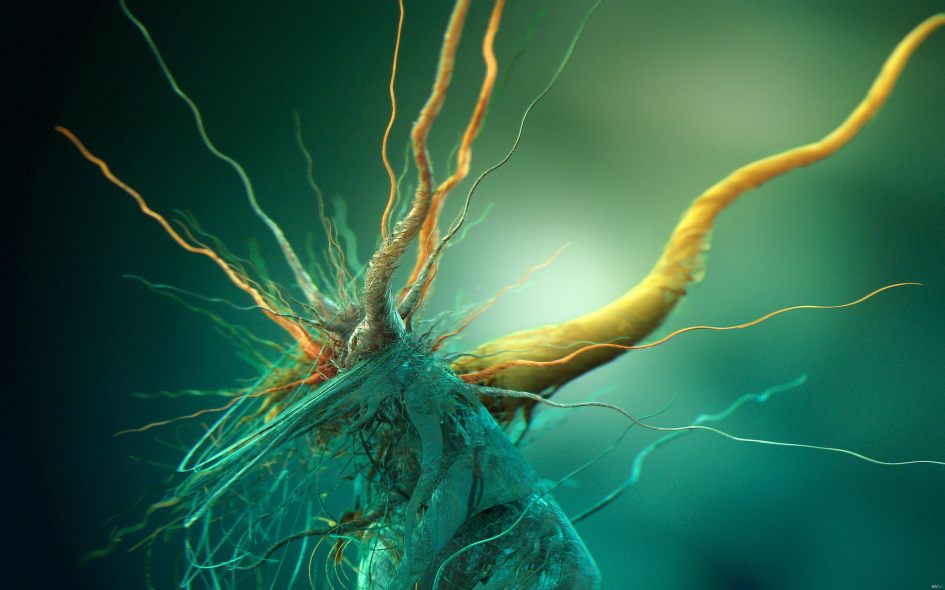There is a domain of creatures that diffusively encircles an entire planet. There are so many of them that they occupy every conceivable ecological niche. Yet, despite their countless numbers they are so in tune with their local ecology that they have become an intrinsic part of it. Those that live in rural locations greatly outnumber those that inhabit strange cites, which are gregarious, smart and even have their own personalities. The cities consider themselves as being independent from their inhabitants, yet share their nutrition with them. They have a diurnal waste cycle that removes debris and also makes room for a new influx of city dwellers. Mature cities can even reproduce to make new ones that are immediately available for the city inhabitants to colonize.
Modern biotechnology has recently revealed that humans are immersed in a bacterial world. So much so, that an alien naturalist might consider humans as little more than smart city housing for bacterial colonies. While we think we are at the top of an evolutionary tree, it appears that our evolution is closely linked to, if not entirely dependent on bacteria. They have collectively made it possible for complex life forms to exist as they have produced our breathable atmosphere, our soil and even our rainfall. Although they have not been proven to possess a collective ‘mind’ they do have extremely sophisticated methods of communicating using linguistic qualities [1]. They encircle the planet like a chemical Internet and hold incessant conversations using physics and chemistry.
Bacteria are resilient, agile and smart. Some can cure cancer, some eat poison, others can resist extreme conditions and still, we think of bacteria as being primitive life forms. Yet no matter how simple we think they are, they have incredible technological powers. Bacteria don’t use tools as such, since their technologies are extrusions plucked from their own bodies. For example, bacteria can give themselves new powers by self-modifying their genes to produce bioluminescence [2], swarming behavior [3] or architectural biofilms.
Bacteria outnumber our human cells 10:1. Yet they compose only 3-5 kg of our body weight since their cells are so much smaller than our own. In fact, our natural ‘microbiome’ is an essential part of our immune system, warding off bacteria’s more invasive relatives that might cause us harm. Through the new lens of biotechnology we are becoming aware that we share our most intimate spaces with bacteria, which has opened up newly discovered landscapes that are rich with technological opportunities. Jessica Green studies the bacterial profiles of our living spaces to improve our health and well-being, while Philips has proposed that bacteria could help us save energy by powering home lighting systems. Sonja Baumel has explored the idea of using bacteria to form a decorative garment around her body that responds to her surroundings like photophores, the bacteria-rich camouflage cells found on deep sea creatures.
Yet our relationship with bacteria is still more personal than this. Our own cells show contemporary and historic evidence that we are assemblages of non-human ancestors that include viruses, prions and mitochondria. This molecular entwining between humans and bacteria raises the possibility of augmenting the human body by manipulating our bacteria instead of our own flesh. Futurist Ian Pearson speculates that through advances in genetic technologies the human species will diversify and give rise to Bacteria sapiens. Yet we may already have passed that threshold, as we’re not in control of this newly discovered micro-miniature world that encircles us on a planetary scale. Next nature acknowledges the messiness of our biological origins and the ultimate connectedness of all species. It seeks to develop better communications between every life form – rather than engaging in an all-out antibiotic boundary war that we’re simply not going to win.
Photos of Sonja Baumel’s work via Scientific American and Ecouterre.
This essay was first published by Next Nature, HERE
REFERENCES
1. Jacob, E.B., Becker, I., Shapira, Y., and Levine, H.(2004) Bacterial linguistic communication and social intelligence, Trends in Microbiology, pp. 366-372.
2. Nealson, K. H. 1977. Autoinduction of bacterial luciferase. Occurrence, mechanism and significance. Arch. Microbiol. 112: 73-79.
3. Armitage, J. P. (1992) Bacterial Motility and Chemotaxis. Science Progres. 76:451-477.
* hero image used from http://wallpapers-diq.com/wp/11__Growth_of_Cubic_Bacteria.html

December 10, 2014 at 10:57 pm
What Rachel and so many do not know or realize is that the early researchers of bacteria came to an erroneous conclusion that mankind some how needs bacteria within their body and in the landscape.. Not true… To view the once unknown causes of ageing and death, and hear and view discussion about the located cure.. Go to http://adamandevewordresearch{dot}blogspot{dot}com/ for the waking of science.. Examine last months post as well as this months posting.. As the entire site.. Respect